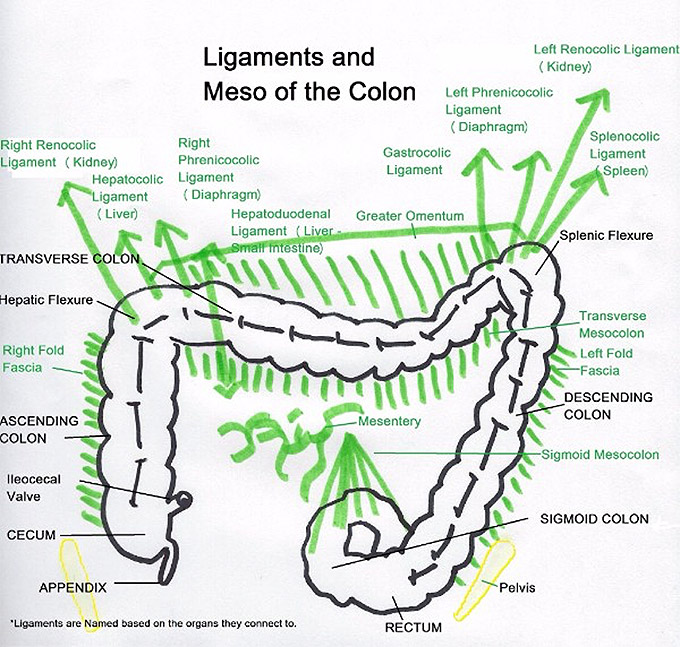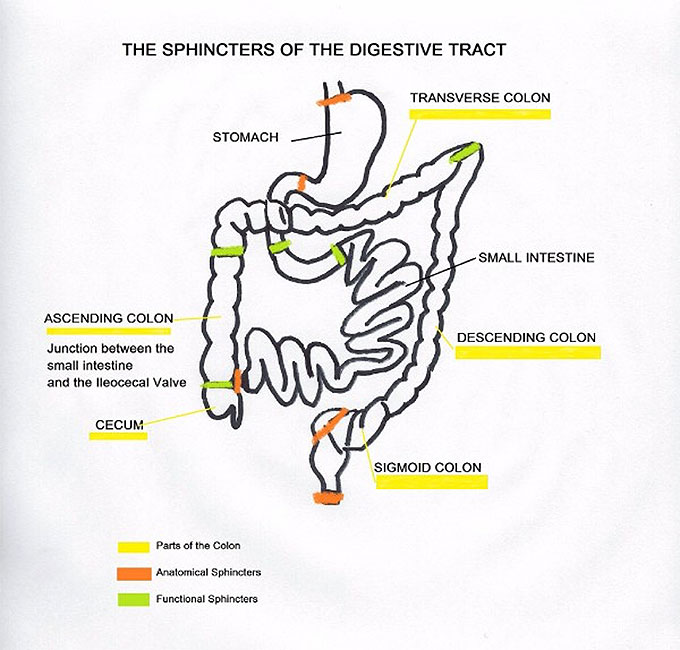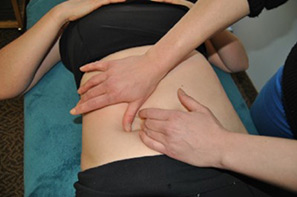Did you know that lower back and pelvic pain can actually be a result of your colon? In today’s article Chloé Sardin explains why the correlation between digestive problems and back or pelvic pain should be more common knowledge. Also if you’ve never heard of the brain-gut connection, look no further!
I am made of four different parts, measure on average 160 cm, and have 13 networks of strings to my surrounding environment. I extract water and salt, absorb vitamin K and different B vitamins. I am more the tortoise than the hare of your digestive tract. I can cause diarrhea, constipation, gas, and cramps, and I look like a sausage bag.
…Did you figure out who I am? That’s right: I am the most unglamorous, unspoken part of your guts! I am your large intestine / colon.
Lower back and pelvic pain (sacroiliac, for example) can be linked to your colon:
A very long time ago, we used to walk on all fours; our guts evolved to be suspended from our back like all vertebrates in order for them to fight gravity. Now that we stand upright, this system is more challenged and our organs are dropping down in our abdomen. This can lead to some pathologies (problems) called “visceroptosis” which means an organ has dropped lower than it should and its suspension system has lengthened. But to a lesser effect organs can also pull at their attachments, such as the front of the lumbar spine and pelvic bones, through their connective tissues and ligaments. Here are some of the many connections the large intestine makes with the peritoneum (lining of your abdomen), diaphragm, kidneys, liver, stomach, spleen, and hip flexor (to name a few!)

The colon can also create problems in your back through its “sphincters”. A sphincter is a circular muscle that stays contracted in your bowel and opens regularly to let the digesting food move to the next part of your gut when required. They are related to our nervous system and know when to get the job done! Unfortunately, sometimes they can be too tight and act as though they have a spasm – which is never pleasant – creating pain in its surroundings and preventing digestion from continuing properly.

Osteopaths are trained in “Visceral Osteopathy”, which allows them to figure out if your pain comes from your joints or muscles, or if it could be related to your guts. They are trained to work on all the suspension systems of your organs and on sphincters (like the ileocecal valve between your small and large intestines).
The Brain-Gut Connection:
Have you ever noticed the number of common expressions related to the gut? Such as “to have a gut feeling”, “butterflies in our stomach”, “to digest an event” etc. Now science is coming to the conclusion that our guts have their own nervous system that influences our brain and body.
The vagus nerve or tenth cranial nerve (CN X) goes from the brain down to the neck, following your esophagus (tube from your mouth to your stomach), between your lungs, past your heart, and gets through your diaphragm. There are actually two of them: one is responsible for most of your guts on the right side and one for the left side. The vagus nerve is capable of getting information from the guts to the brain and vice versa. During its journey, it can get trapped in some narrow passages. For example, in the case of a car accident, it can get affected by whiplash as it exits the skull between two cranial bones.
The other way our colon can be affected is through our nervous system. For example, you might want to run to the bathroom before a job interview due to the stress, or busy parents may be constipated from not having enough time in the day to go to the bathroom. Our colon requires us to activate our parasympathetic nervous system (the one that helps us relax) to be operational, if we are too stressed, our sympathetic nervous system (activates the “fight or flight” reaction) will accelerate movement through the bowels, preventing us from absorbing all the nutrients we need.
 Osteopathy and your Large Intestine’s Health:
Osteopathy and your Large Intestine’s Health:
An osteopath considers your body to be a well-oiled machine, where symptoms and pain are just a clue to discover the root cause of the problem. Therefore, in order to determine the original source of your pain and symptoms, we must consider all your body parts, including your digestive system, the balance of your nervous systems, and previous accidents. For example, rather than just dong a spine manipulation or exercises to strengthen muscles, a pain in your lower back/sacroiliac joint might not be resolved without mobilization of your sigmoid colon.
When it comes to the gut, we also enjoy working with other health care providers in order to help out our patients the very best we can. Don’t forget your guts the next time you are wondering why you’re feeling poorly!
You can book an osteopathic appointment with me by clicking here.
